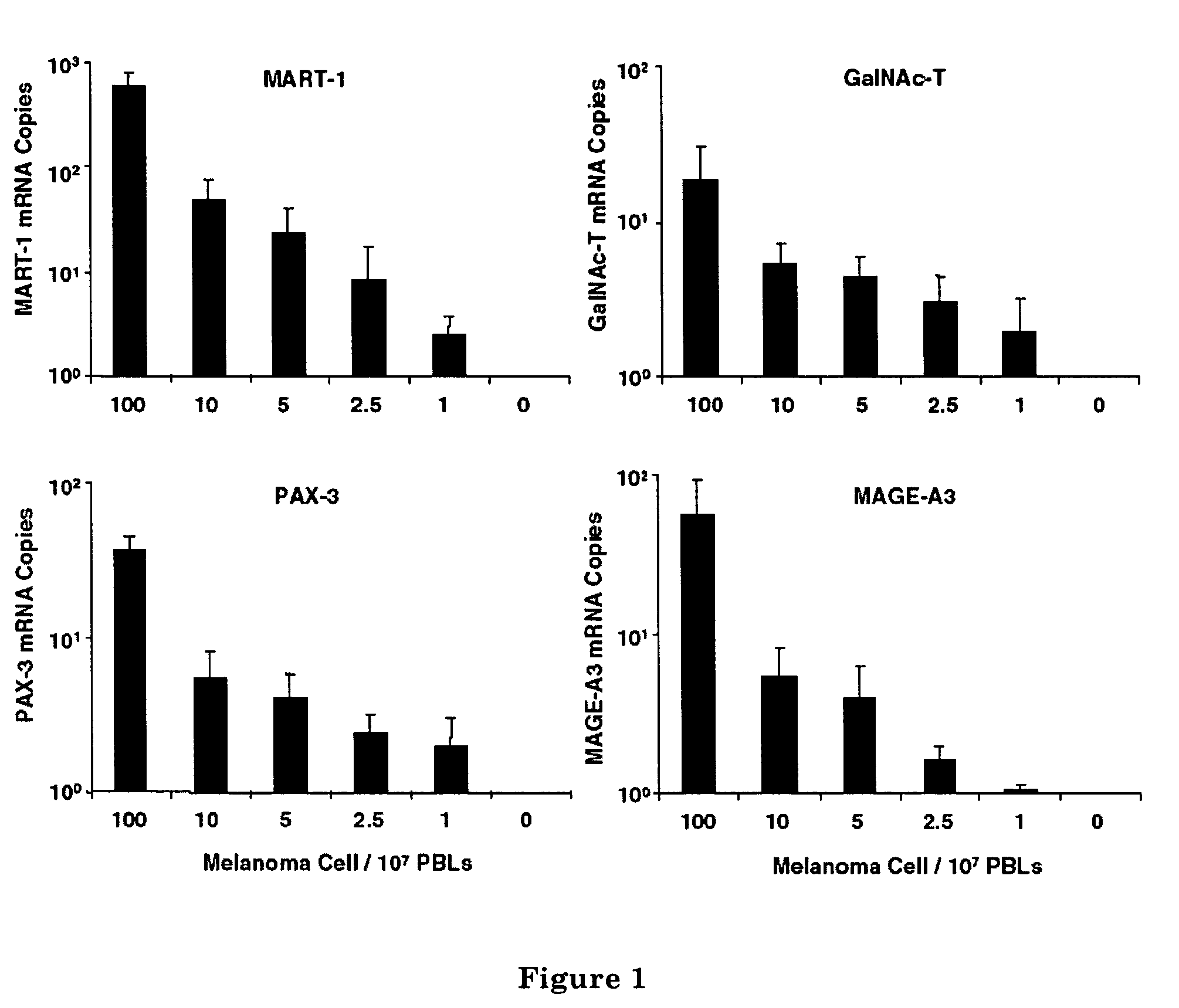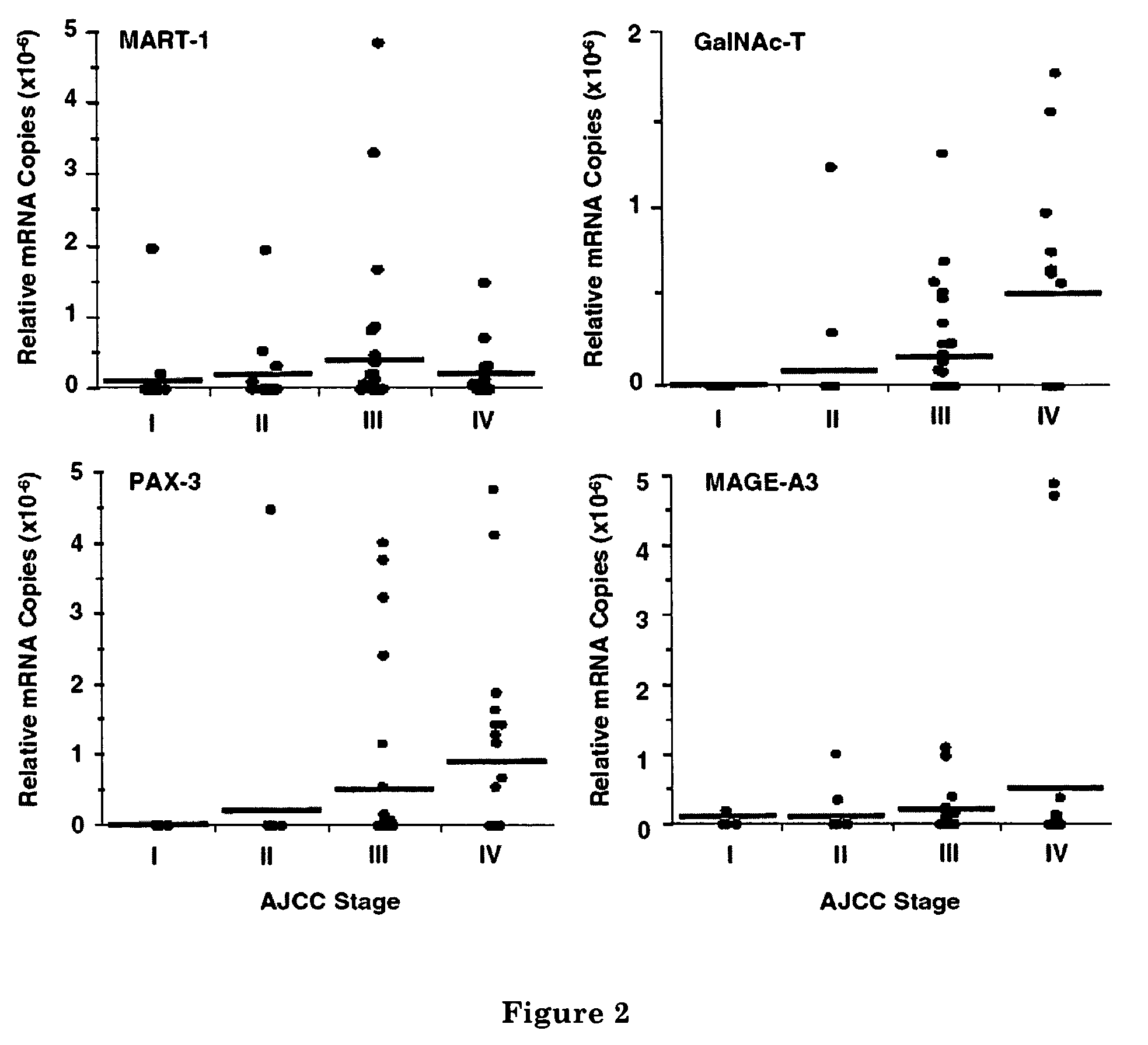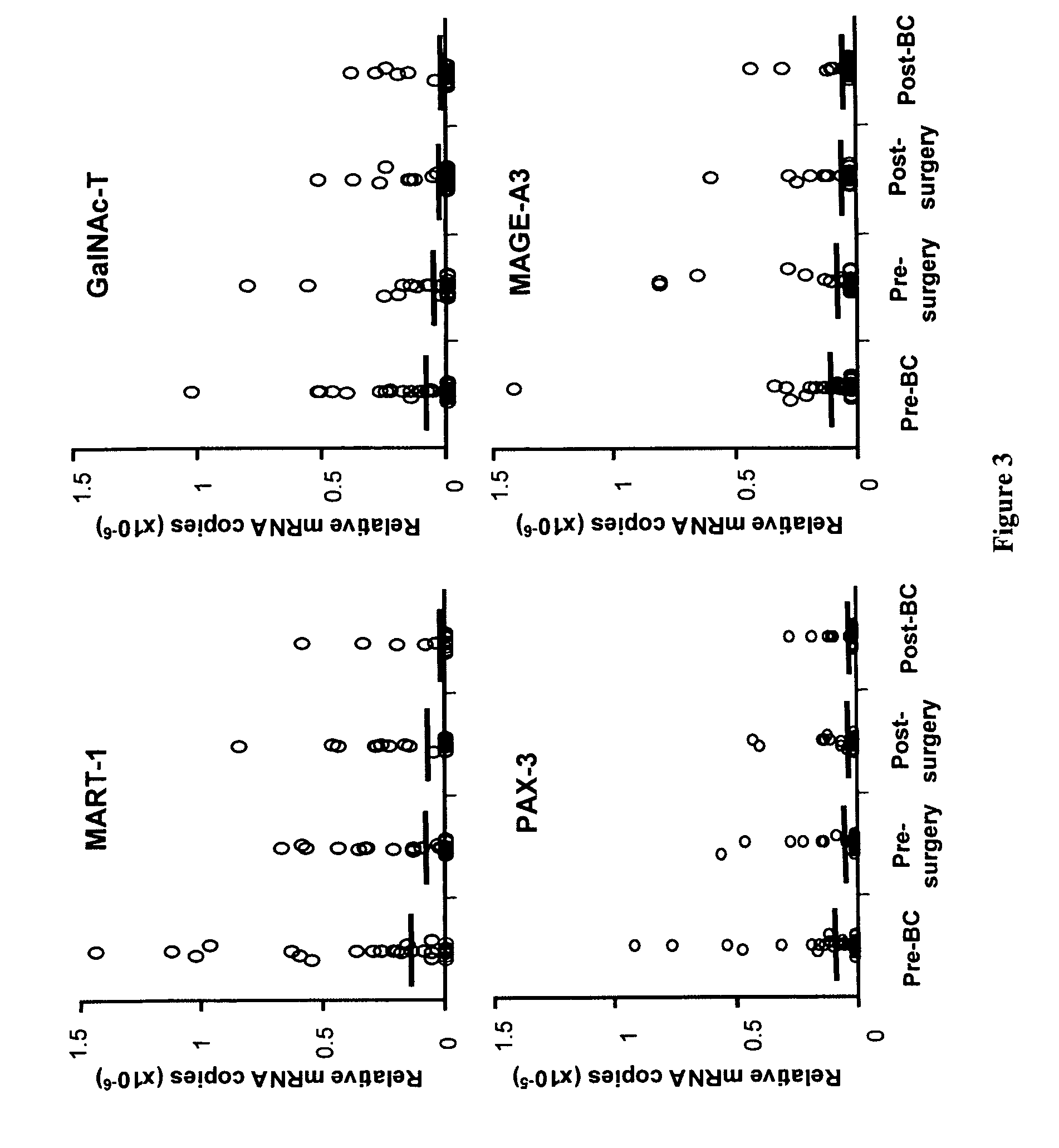Detection of cancer cells in body fluids
a cancer cell and body fluid technology, applied in the field of cancer diagnosis, prognosis and management, can solve the problems of tumor cells, inability to accurately predict the survival of patients receiving neoadjuvant or adjuvant biochemotherapy, and the current assay system cannot accurately predict the survival of patients
- Summary
- Abstract
- Description
- Claims
- Application Information
AI Technical Summary
Benefits of technology
Problems solved by technology
Method used
Image
Examples
example 1
Multimarker Quantitative Real-Time PCR Detection of Circulating Melanoma Cells in Peripheral Blood: Relation to Disease Stage in Melanoma Patients
Materials and Methods
[0085]Seventeen melanoma cell lines (MA, MB, MC, MD, ME, MF, MG, MH, MI, MJ, MK, ML, MM, MN, MO, MP, and MQ) were established and characterized at the John Wayne Cancer Institute (JWCI). Cells were grown in RPMI 1640 containing 100 mL / L heat-inactivated fetal calf serum and 10 g / L penicillin / streptomycin (Gibco) in a T75-cm2 flask and were used when they reached 70%-80% confluence.
Patients
[0086]All patients enrolled in the study had documented physical and medical histories, and their AJCC stage of disease was determined and recorded at the time of blood drawing. Blood was drawn from 94 melanoma patients (20 with stage I, 20 with stage II, 32 with stage III, and 22 with stage IV disease) immediately before they received any treatment at JWCI. All patients signed consents for the use of their blood sp...
example 2
Serial Monitoring of Circulating Melanoma Cells during Neoadjuvant Biochemotherapy for Stage III Melanoma: Outcome Prediction in a Multicenter Trial
Patients and Methods
Patients
[0111]Patients for this qRT study were selected from 94 melanoma patients enrolled in a prospective multicenter trial of neoadjuvant BC. The 94 patients comprised 61 males and 33 females with a median age of 43 years (range, 17-76). All patients were pathologically diagnosed with AJCC stage III melanoma and treated with neoadjuvant BC and surgery between 1999 and 2002. A subset of patients from three of centers, John Wayne Cancer Institute (Santa Monica, Calif.), University of Colorado Cancer Center (Aurora, Colo.), and Hubert H. Humphrey Cancer Center (Robbinsdale, Minn.), signed informed consent for the use of their blood specimens, and the qRT study was approved and carried out in accordance with guidelines set forth by the individual institutional review board committees.
Treatment Program and Blood Procure...
PUM
| Property | Measurement | Unit |
|---|---|---|
| follow-up time | aaaaa | aaaaa |
| volume | aaaaa | aaaaa |
| volume | aaaaa | aaaaa |
Abstract
Description
Claims
Application Information
 Login to View More
Login to View More - R&D
- Intellectual Property
- Life Sciences
- Materials
- Tech Scout
- Unparalleled Data Quality
- Higher Quality Content
- 60% Fewer Hallucinations
Browse by: Latest US Patents, China's latest patents, Technical Efficacy Thesaurus, Application Domain, Technology Topic, Popular Technical Reports.
© 2025 PatSnap. All rights reserved.Legal|Privacy policy|Modern Slavery Act Transparency Statement|Sitemap|About US| Contact US: help@patsnap.com



